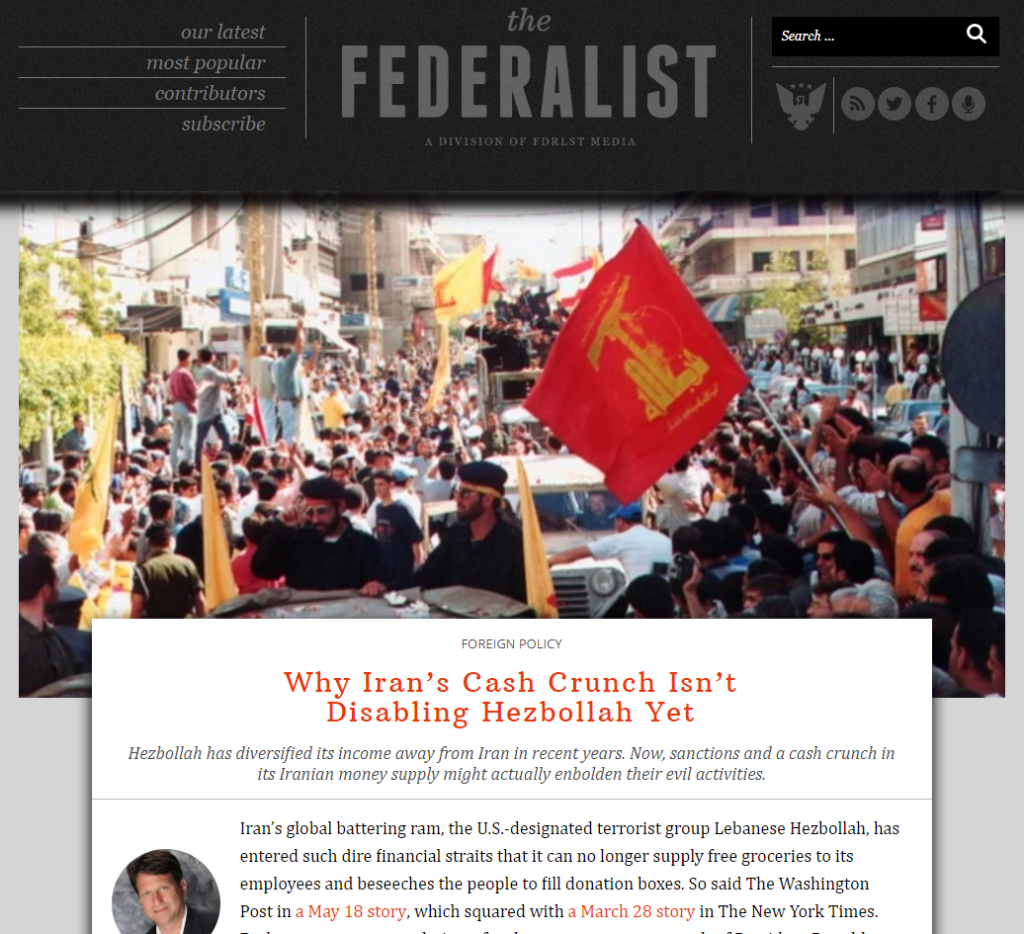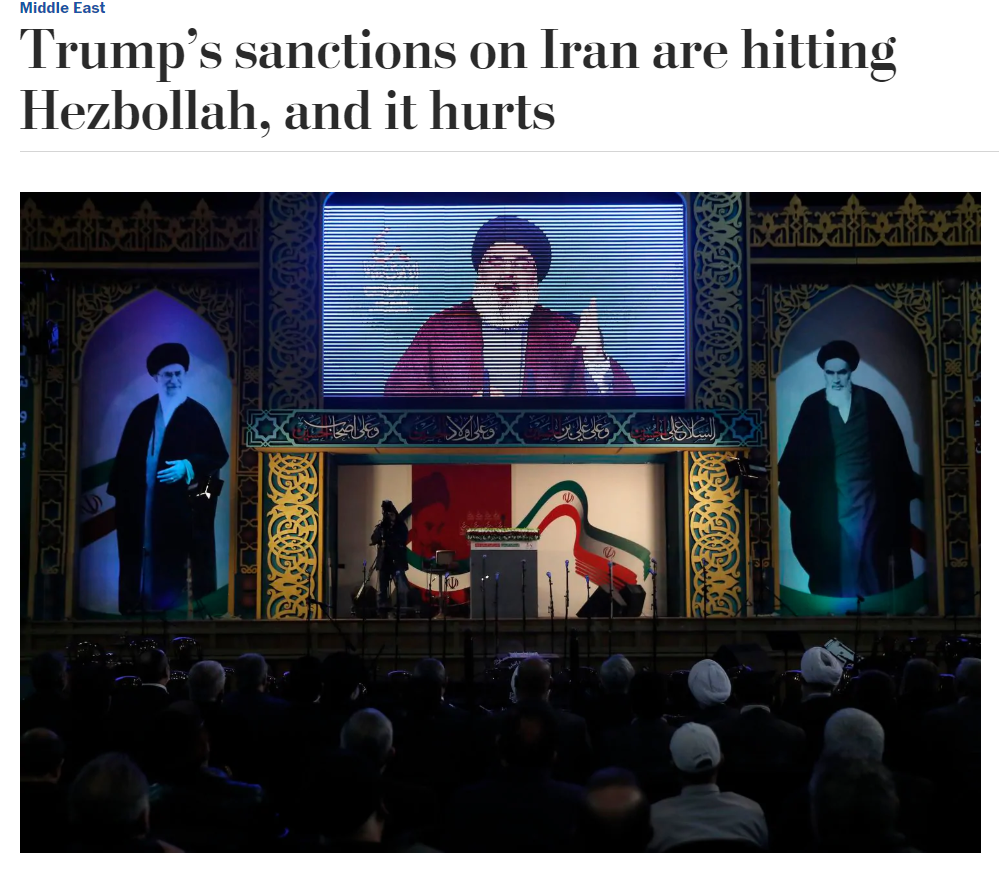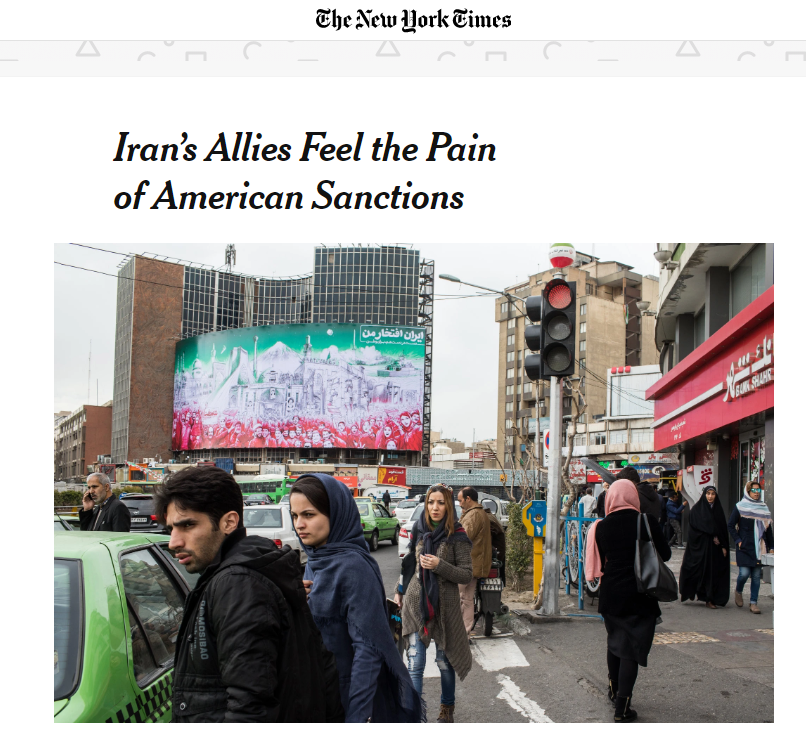The Post and Times report that Hezbollah is suffering financial hardship these days. But left unsaid by is that Hezbollah achieved significant financial autonomy from Iran more than a decade ago. Starting in about 2006, it moved into Latin America and hit it very big in the international cocaine trafficking industry. Wobbly finances actually are nothing new to Hezbollah. It went to Latin America because Iranian financial support had always ebbed and flowed with oil prices or the relative tightness of various sanctions over the years.

By Todd Bensman originally published in The Federalist May 24, 2019
Iran’s global battering ram, the U.S.-designated terrorist group Lebanese Hezbollah, has entered such dire financial straits that it can no longer supply free groceries to its employees and beseeches the people to fill donation boxes. So said The Washington Post in a May 18 story, which squared with a March 28 story in The New York Times. Both papers report tough times for the terror group as a result of President Donald Trump’s to-the-bone-marrow sanctions against the group’s primary patron, Iran, which has had to cut subsidies.
The cuts have forced Hezbollah fighter furloughs from Syria, staff layoffs at its Al-Manar Internet TV station, slashes in salaries and reimbursement expenses, and jihad donation boxes deployed all over Lebanon, the newspapers report.
These reports come at an auspicious time. Wittingly or not, the reports feed a narrativethat Democratic presidential candidates and their supporters are using to paint the Trump administration as incompetent or mendacious in redeploying a carrier battle group in response to intelligence that Iran is preparing first strikes. The narrative says President Trump and his people are purposefully over-weighting the threat of Iran and Hezbollah as a pretext for another war quagmire like Iraq.
But the newspapers leave important information and context unaddressed. Even if it suffers the effects of bad cash flow, Hezbollah is not on the ropes. As Iran’s global tool of retribution and coercion, and battle-hardened from years of fighting in Syria, it remains a highly dangerous threat to the United States and its allies.
Left unsaid by both the Post and the Times is that Hezbollah achieved significant financial autonomy from Iran more than a decade ago. How? Starting in about 2006, it moved into Latin America and hit it very big in the international cocaine trafficking industry.
Escaping from Life in Iran’s Basement
Wobbly finances actually are nothing new to Hezbollah. It went to Latin America because Iranian financial support had always ebbed and flowed with oil prices or the relative tightness of various sanctions over the years.


It’s never been clear to what degree Hezbollah relies on Iran for operational cash flow, beyond the obvious provision of high-dollar missiles and weapons systems with which it threatens Israel from Lebanon; such information would be highly proprietary. Some reports have the Iranians providing 70 percent of Hezbollah’s annual operations budget, with estimates of that ranging anywhere from $200 to $700 million a year. No one outside of the intelligence world really knows.
Some Hezbollah experts suggest the organization hit it so big as a global drug trafficker that its profits began to exceed what Iran gives in recent years.
Writing in the Small Wars Journal, for instance, Doug Livermore explained that Hezbollah, using far-flung members of the Lebanese diaspora, forced its way into the narcotics trade of Central and South America, secured access to narcotics, and developed an enviable smuggling and distribution network across North Africa, Europe, and the Middle East.
Hezbollah immediately began earning “enormous amounts of money” in the narcotics trade, using banks, money transfer businesses, and the purchase of goods (such as automobiles) to launder the proceeds back to Lebanon. Livermore, among others, points out that while Iran was providing Hezbollah up to $200 million per year, our own Drug Enforcement Agency (DEA) and Treasury Department said just one Hezbollah smuggling ring in Central America generated more than $200 million every month.
The DEA’s 2008 to 2016 “Project Cassandra” found that Hezbollah’s “External Security Organization Business Affairs” arm collected $1 billion a year from money laundering, criminal activities, and drug and weapons trade. All through the Obama years and into the Trump years, Hezbollah and South American drug cartels have been involved in cocaine shipments from Latin America to West Africa to European markets, as well as through Venezuela and Mexico to the United States.
Finding the Keys to Financial Freedom in Latin America
The terror group started in the early 1980s as an Iranian-backed Islamist proxy that aimed to expel American and French soldiers from Lebanon and one day eliminate Israel. In recent decades, as the group grew into a political organization too, it has acted as an arm of Iranian foreign policy, its purpose to project a credible threat of violence globally as leverage against adversaries like the United States.
Hezbollah’s trafficking and globally circuitous money-laundering operations are extensive now, well-reported and notorious in Venezuela, Paraguay, Argentina, Brazil, Bolivia, Ecuador, Peru, Colombia, Nicaragua, and Panama. U.S. indictments, Treasury Department designations, extradition fights, and State Department reporting have laid all of this out for reporters of The New York Times and The Washington Post to cite.
“While Hezbollah’s arsenal and fighters are concentrated in Lebanon and Syria, Latin America is an indispensable theater of operations for the criminal networks that generate much of Hezbollah’s revenue,” Emanuele Ottolenghi, a senior fellow for the Foundation for the Defense of Democracies, wrote last year in a Foreign Policy magazine essay about the situation.
None of this is mentioned in either the Times or the Post, even though a discussion seemed more than prompted when a senior Hezbollah official was quoted saying, “Hezbollah has other sources of income and plans to aggressively seek out more, hoping to ‘turn this threat into an opportunity to develop new revenue streams.’”
This all means that, despite reports of jihad donation boxes in Lebanon, Hezbollah remains a formidable threat to the United States as a spear tip for Iran. On the drug money, its operatives, trained in explosives and arms, are deployed all over the world. They are all able and willing to carry out large-scale suicide bombings such as three against Jewish targets in Panama and Argentina in the early 1990s, and smaller-scale assassinations when called upon, as they have in Thailand and Bulgaria.
Its operatives lie in waiting inside the United States too, no doubt maintained in some part by drug proceeds from Latin American operations. As I have reported about two ongoing U.S. prosecutions in New York and in Michigan, Hezbollah fields and pays clandestine operatives of its “Unit 910” to collect target information in American cities for the day they are called on to strike.
Skinnier Pockets—So What?
Joseph M. Humire, executive director of the Center for a Secure Free Society, which analyzes terrorism issues in Latin America, said in an interview that Hezbollah plots and activities have noticeably increased throughout the region over the past few years. With sanctions and a cash crunch, he said, look for that trend to increase.
“They might be seeing them shaky, but does that mean they’re weak? You could interpret that as they’re more dangerous,” Humire said. “Sanctions don’t usually make them less aggressive, it makes them more aggressive because they see the window closing.”
In an analytical essay about Hezbollah for the Brookings Institute published in January, author Jeffrey Feltman noted that Hezbollah is Iran’s “force-multiplier” to carry out its coercive diplomatic agenda. Late salaries to social service employees and delayed payments to suppliers may be interpreted as signs that U.S. sanctions are taking a toll. But, he writes, the organization remains “revolutionary Iran’s most successful export and one of its primary tools for deadly mischief regionally and internationally.”
So, is Hezbollah facing a bit of a cash crunch right now? Probably so, just as it has at other times in its history. The better, unanswered question for those analyzing the Trump administration’s response to threats from Iran-Hezbollah is: So what?